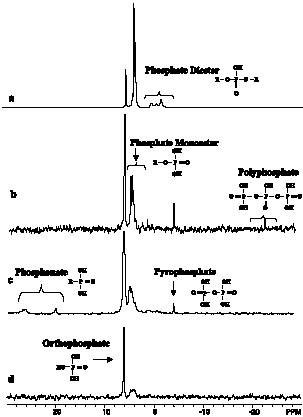| HOME | INSTRUMENTATION | NMR TIME | USERS & RESEARCH |
INDUSTRIAL AFFILIATES |
NEWS & LINKS |
Publications: (Details Below)
Paytan, A; Cade-Menun, BJ; McLaughlin, K; Faul, KL (2003)
"Selective phosphorus regeneration of sinking marine particles: evidence from P-31-NMR"
MARINE CHEMISTRY, 82 55-70.
Details: Selective phosphorus regeneration of sinking marine particles: evidence from P-31-NMR Paytan, A; Cade-Menun, BJ; McLaughlin, K; Faul, KL (2003) MARINE CHEMISTRY, 82 55-70. Abstract: Phosphorus (P) regeneration and transformation in the oceanic water column and in marine sediments depends on the chemical nature of the sinking particulate P pool. For the first time, we have characterized the molecular composition of this pool, in various oceanic settings and water depths, using 31P nuclear magnetic resonance (NMR) spectroscopy. Both inorganic P (orthophosphate, pyrophosphate, and polyphosphate) and organic P compounds (orthophosphate monoesters, orthophosphate diesters, and phosphonates) were identified. The inorganic P is present predominantly as orthophosphate with small amounts ( < 10%) of pyro- and polyphosphates. These inorganic compounds may be at least partially of biological origin. The relatively high abundance of inorganic P suggests that considerable transformation from the organic to the inorganic pool occurs in the water column. Some of this inorganic P may be present in association with mineral phases (apatite, clays, and oxyhydroxides) and thus may not be bioavailable. The distribution of organic P compounds in the sinking particulate matter pool is generally similar in composition to phytoplankton and significantly different than in the dissolved organic matter (DOM) pool. Results indicate that in most oceanic regions the majority of P regeneration occurs at very shallow depths. However, in the Ross Sea, a significant fraction of organic P is exported to depth below the euphotic zone. Hydrolysis of P compounds continues throughout the water column as indicated by a decrease in total particulate P with depth and a relative decrease in the organic P fraction at some sites. Orthophosphate monoesters dominate the organic P pool at all locations, followed by orthophosphate diesters. Phosphonates are present in a few samples but never contribute more than 6% of total extractable P compared to 25% abundance in the dissolved organic P (DOP) pool. This work shows that considerable spatial and temporal variability in the molecular composition of sinking particulate P exists. A more systematic study is needed to assess the different environmental parameters that affect the composition of particulate P and result in this variability.
|
| Bio-X | Structural Biology | School of Medicine | Stanford University |

